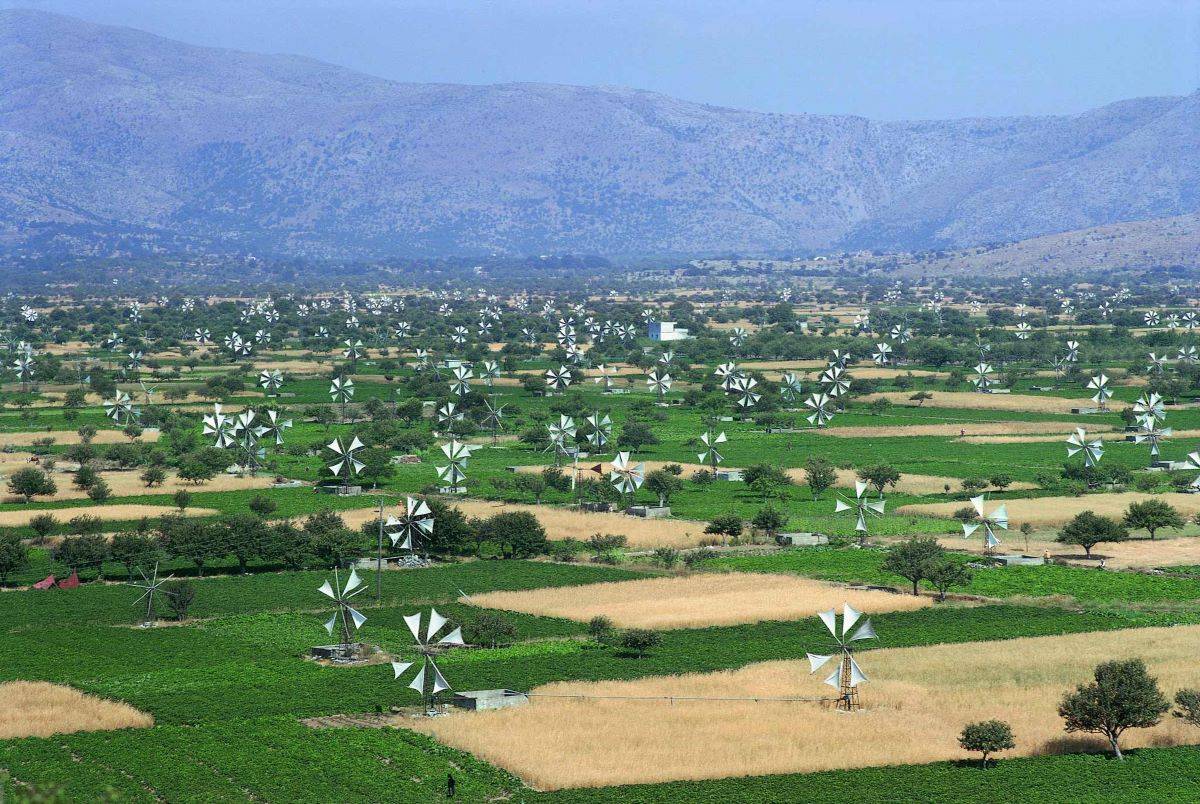
Lasithi Plateau is 70 km east of Heraklion and it is known for the picturesque windmills that were one of the first wind farms in Europe and in the 1950s and 1960s their number reached 10,000 to 13,000.
The idea started at the end of the 19th century by the initiator and manufacturer of the first wooden groundwater pumping windmill, Emmanuel Papadakis or Spirtokoutis. In 1920, Stefanos Markakis or Markostefanis, with his innovations, managed to modernize the mill by changing the tower to a metal one, made it more solid, increased its height and built an iron coil on which the head system slided circularly. Then the locals built 5 MW wind turbines. The windmills proved very successful and identical ones were copied and built in other parts of the world such as Ethiopia, India and America.
Today, the perforated polyester sails harness the tension of the winds with the holes in them, relieve the air pressure and make the windmills operational all year round. However, the windmills in operation are only 200. The aim is to increase the number of restored windmills and give the plateau a little reminder of its glorious past.
Innovation on the Lasithi Plateau began earlier, when the Venetians occupied Crete. The Plateau contained water that did not flow into the sea within a river and therefore was not cultivated. The Venetians, in order to be able to have grain and vegetables for their army in Crete, carved horizontal and vertical storage channels there, called Vages or Lines (12 to the north and south and 20 to the west and east) in order to lead the waters in an underground sinkhole, Chonos, which supplied the Aposelemis river with water. The Vages, or Lines divide the plain into 193 squares. (see aerial photos from GOOGLE). These blocks were granted to Venetian colonists and local cultivators as endowments or Lassiti, in Venetian. That's where Lasithi got its name from.
The cultivated land on the Lasithi Plateau is 22,000 to 25,000 acres, 8,000 to 12,000 of which are potatoes, 3,000 to 6,000 vegetables, 2,000 to 5,000 cereals, 1,000 apple and vineyards, pulses, leguminous plants and livestock plants. The plateau farmers supply Crete, Athens and mainland Greece and export their products to many parts of the world.
(More articles about Crete on www.gomega.gr)